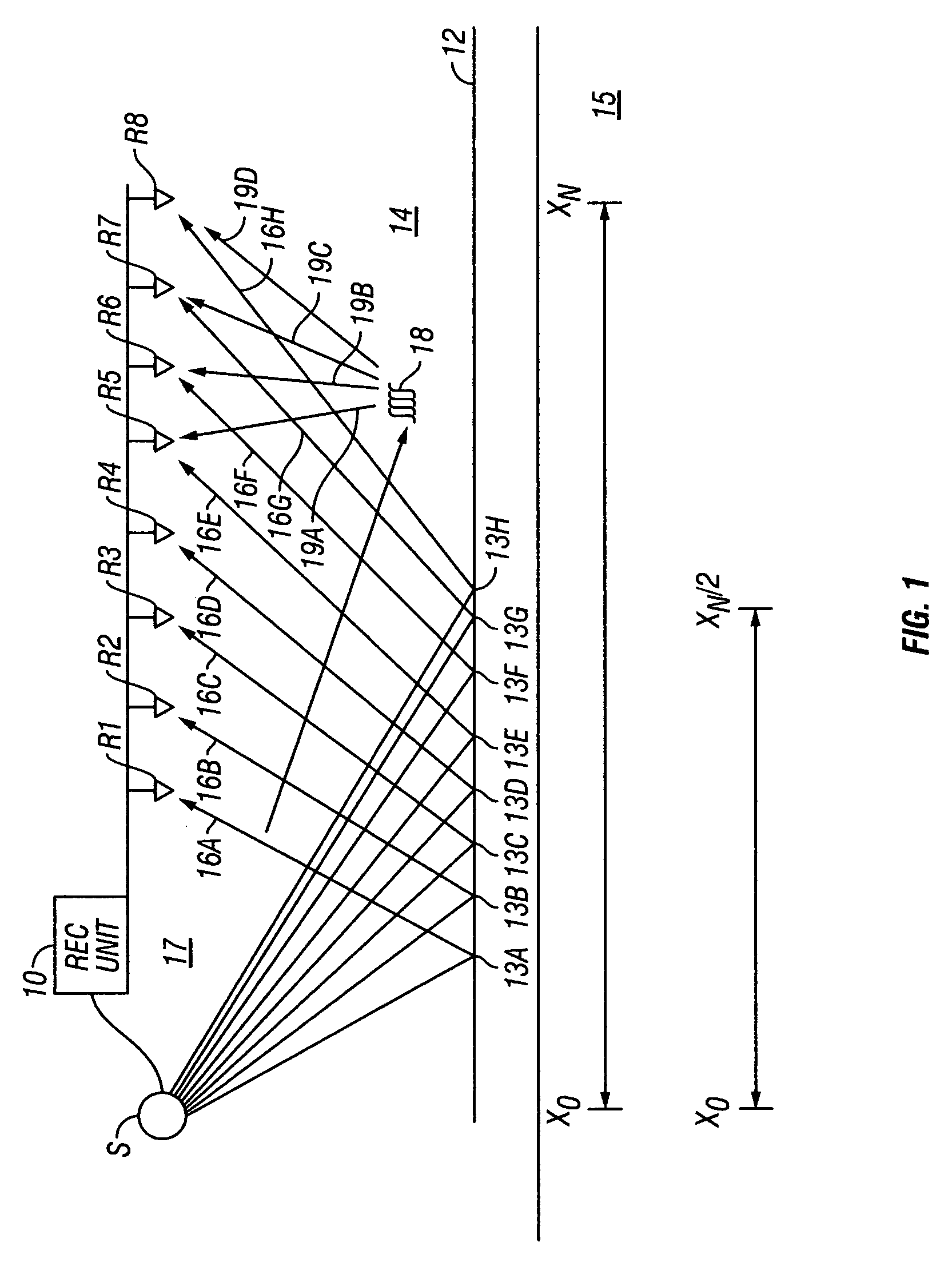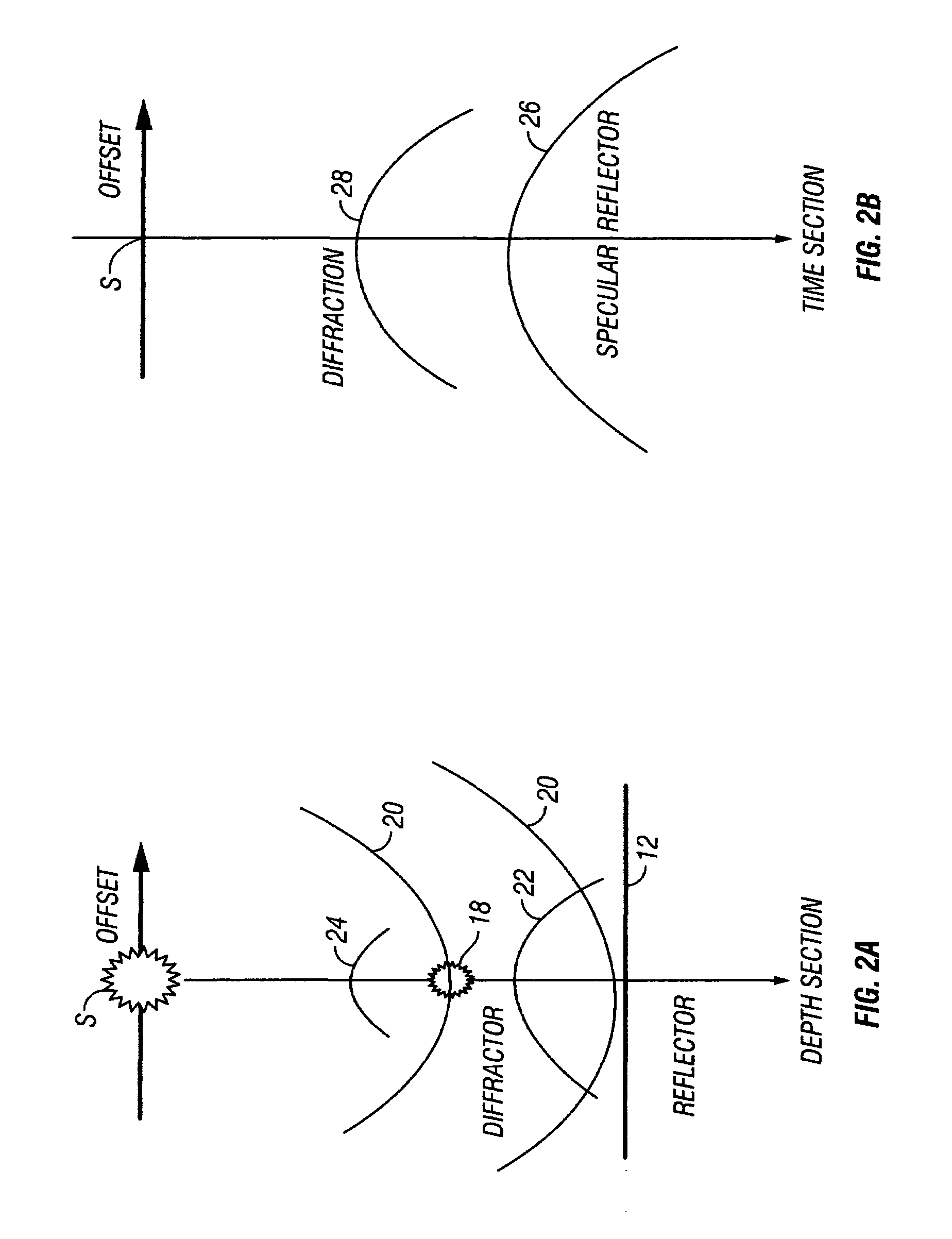Method for detecting earth formation fractures by seismic imaging of diffractors
a technology of diffractors and seismic imaging, which is applied in the field of seismic exploration of the earths subsurface, can solve the problems of not being able to accurately detect the fractured formations of the earth formation, not being able to provide azimuthal avo data for all areas, and not being able to fit the foregoing assumptions of lateral continuity
- Summary
- Abstract
- Description
- Claims
- Application Information
AI Technical Summary
Problems solved by technology
Method used
Image
Examples
Embodiment Construction
[0024]An example of seismic data acquisition is shown schematically in FIG. 1. A seismic recording unit 10 is placed at a selected position on the Earth's surface. The recording unit 10 includes various control and recording devices (not shown separately) of types well known in the art including a source controller, acquisition controller and multi-channel data recorder. The source controller (not shown separately) is coupled operatively, either by cable as shown in FIG. 1 or by radio telemetry (not shown in FIG. 1), to one or more seismic energy sources, shown generally at S. The source S may be a vibrator, explosive, air gun, water gun or and array of such guns depending on the particular data acquisition arrangement used and whether the acquisition is being performed on land or in a body of water. Any type of seismic energy source known in the art may be used with the invention, and accordingly, the type of source S is not a limitation on the scope of the invention.
[0025]A plural...
PUM
 Login to view more
Login to view more Abstract
Description
Claims
Application Information
 Login to view more
Login to view more - R&D Engineer
- R&D Manager
- IP Professional
- Industry Leading Data Capabilities
- Powerful AI technology
- Patent DNA Extraction
Browse by: Latest US Patents, China's latest patents, Technical Efficacy Thesaurus, Application Domain, Technology Topic.
© 2024 PatSnap. All rights reserved.Legal|Privacy policy|Modern Slavery Act Transparency Statement|Sitemap



